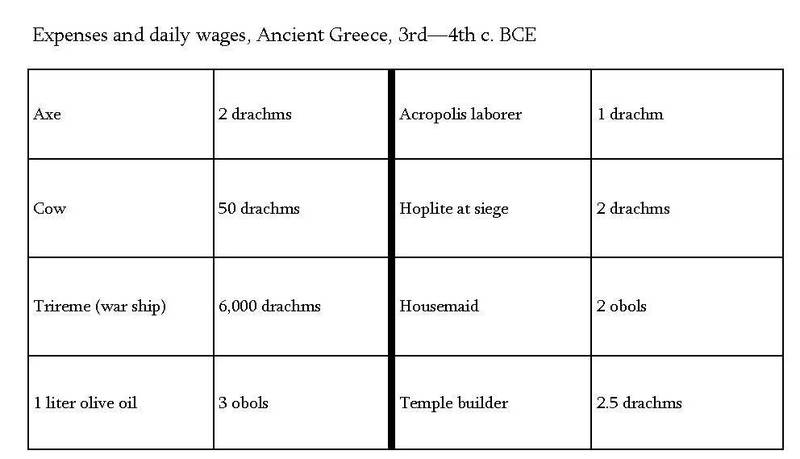Terminology
There is a lot of terminology associated with ancient coin collecting. Here are a few words and abbreviations you will want to be familiar with in order fully understand what the coins are made of and how much it is worth.
Coin Types:
These abbreviations are based on the Latin word for the associated material.
AR = argentum = Silver
AU= aurum = Gold
AE = aes = alloy, usually bronze or copper
A number, in combination with the letters, identifies the size of the coin. For Greek coins, the number identifies the diameter of the coin in millimeters. For Roman coins, numbers from 1 to 4 indicate a size range. AE1 is over 25mm. AE2 is 21-25 mm. AE3 is 17-21 mm, and AE4 is less than 17mm.
Coins in both the Greek and Roman world changed over time. For example, new leaders might introduce new coins to try to combat the rampant inflation that plagued many ancient societies, the later Roman Empire in particular. Many earlier Greek monetary systems did not face the harsh debasement that tormented the Roman system as early as the second century CE.
In general, these are the values that are associated with each Roman coin as established under Augustus in the early first century CE.
Roman Imperial Monetary System:
1 gold aureus = 25 silver denarii
1 silver denarius = 16 copper asses
1 brass sestertius = 4 copper asses
1 brass dupondius = 2 copper assses
1 copper as = 2 copper semisses (or 4 copper quadrantes)
Greek coins were much more varied in size and denomination than Roman coins since they were minted by so many different city-states. Even the "standard" weight for two drachms from different places could vary greatly. For example, a drachm from Phoenicia weighed just 56 grains while a drachm under the Aegenetic standard was a much weightier 97 grains.
The basic Greek denominations were defined as follows:
Greek coins:
1 stater = 2 drachma
1 drachm = 6 obols
This is not, however, a reflection of all Greek coins. There was seemingly no limit to the divisions and multiplications of these three standard types. There were tetradrachms, which amounted to four times a drachm, a triobol, which was three obols, and even hemiobols, only worth a slight half obol.
To get an idea of how much these coins might have been worth, this chart provides a comparison of the cost of a few items in the Greek world and how much a daily wage of an individual might be.
References:
Klawans, Zander H. An Outline of Ancient Greek Coins. New York: Sandford J. Durst Numismatic Publications, 1982. Print.
Klawans, Zander H. Reading and Dating Roman Imperial Coins. New York: Sanford J. Durst Numismatic Publications, 1982. Print.
Sayles, Wayne G. Ancient Coin Collecting II: Numismatic Art of the Greek World. Iola, WI: Krause Publications, 1997. Print.
Sutherland, C. H. V. Roman History and Coinage, 44 BC-AD 69: Fifty Points of Relation from Julius Caesar to Vespasian. Oxford: Clarendon, 1987. Print.

